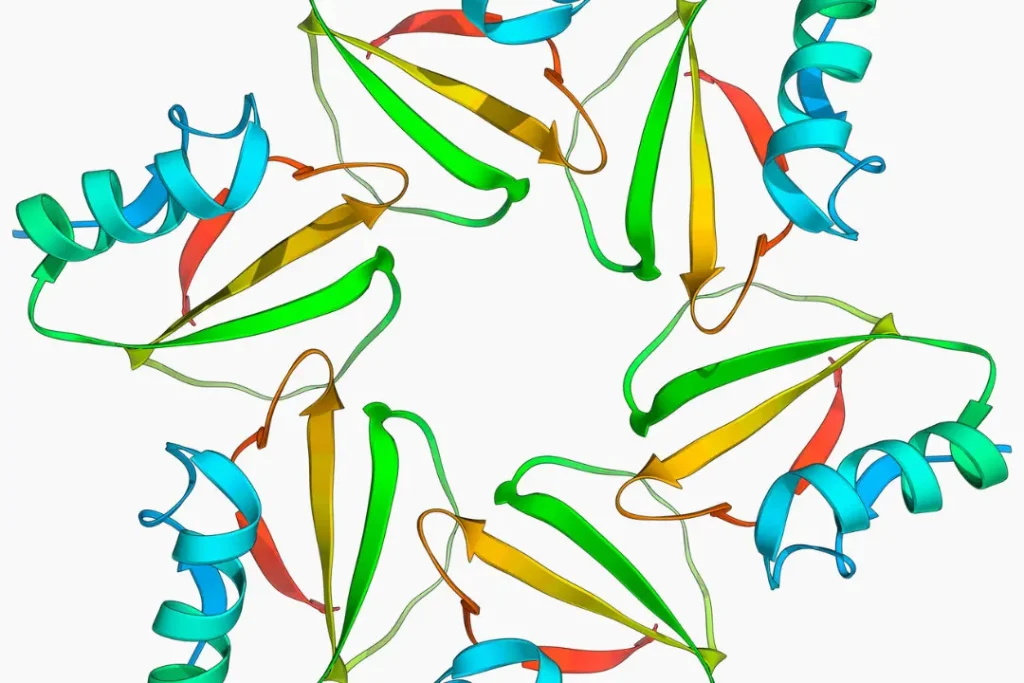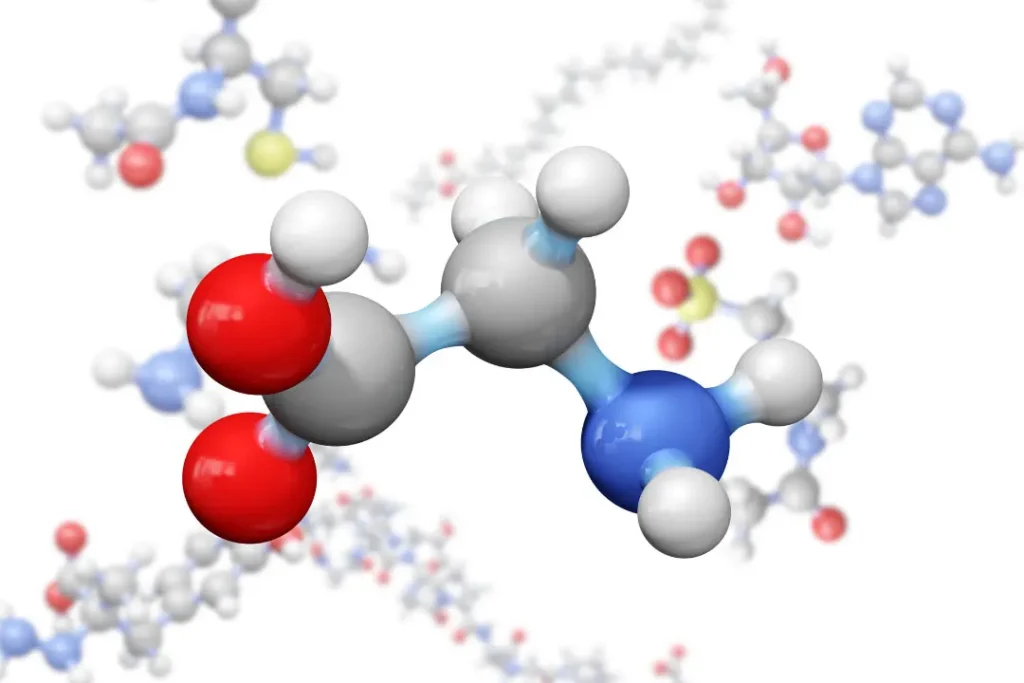A serine protease enzyme called chymotrypsin is essential for the process of digestion. Human genes that code for the enzymes include chymotrypsin C (CTRC) and chymotrypsin B (CTRB1 and CTRB2). Their function in dissolving proteins in the duodenum after their release from the pancreas has received substantial research. The nature, health advantages, recommended dose, adverse effects, possible drug interactions, and appropriate usage of chymotrypsin as a dietary supplement are all covered in this essay.
You May Also Like:
Colombo: Benefits, Dosage, Side Effects, Drug Interactions, and Other Important Information
The Nature of Chymotrypsin
Chymotrypsin is largely generated in the pancreas. It is released into the duodenum of the small intestine after digestion. Chymotrypsin breaks down proteins into smaller peptides. It focuses on breaking peptide bonds that are next to aromatic amino acids like phenylalanine, tryptophan, and tyrosine. Its activity helps transform complicated food proteins into more easily absorbed ones. Chymotrypsin’s ability to carry out these tasks is enabled by a sophisticated interaction of chemical and biological structures at the molecular level.
Because chymotrypsin uses a serine residue in its active site for catalysis, it is categorized biochemically as a serine protease. For chymotrypsin to function as an enzyme, the catalytic triad of histidine-57, aspartate-102, and serine-195 must be present. The nucleophilic assault on the carbonyl carbon of the peptide bond targeted for hydrolysis is made possible by the histidine residue in the triad acting as a general base and helping to remove a proton from the serine residue.

Health Benefits of Chymotrypsin
Chymotrypsin has been researched for its possible medicinal uses in addition to its well-known role in digestion. Chymotrypsin may help reduce swelling or edema since it has been hypothesized to have anti-inflammatory characteristics. Supplements containing chymotrypsin are sometimes recommended in orthopedic and sports medicine to reduce inflammation after surgery.
The possibility of chymotrypsin in cancer treatment has also been shown by recent studies. Research published in 2020 emphasized its function in apoptosis, or programmed cell death, which is often hampered in malignant cells. Furthermore, chymotrypsin, a proteolytic enzyme, may help to break down the protein that covers the surrounding tumor cells, possibly enhancing the effectiveness of standard cancer therapies.
Chemistry of Chymotrypsin
An intriguing issue that combines parts of biology and science is the chemistry of chymotrypsin. As mentioned, chymotrypsin is a member of the group of proteases known as serine proteases because of a crucial serine residue found in their active sites. The well-known catalytic triad is a distinguishing feature of serine proteases including chymotrypsin. The triad is formed by the special geometric arrangement of three amino acids: histidine, aspartate, and serine. The proteolytic activity of chymotrypsin depends on this trio.
When a substrate is bound, the histidine residue functions as a universal base, receiving a proton from the serine residue’s hydroxyl group. A highly reactive serine alkoxide ion is left behind after this reaction, ready to attack the carbonyl carbon of the substrate peptide bond through nucleophilic assault. Halfway through the process, a tetrahedral intermediate forms which is then stabilized by a special “oxyanion hole” in the structure of the enzyme.
An acyl-enzyme intermediate is created when this intermediate disintegrates, releasing the first half of the substrate that was cleaved. Water then assaults this intermediate after being activated by the histidine residue, creating a second tetrahedral intermediate. This second intermediate eventually disintegrates to release the second half of the substrate and renew the enzyme. This beautiful series of events serves as an excellent illustration of the complex yet sophisticated chemistry behind chymotrypsin’s action.

Physiological Mechanism of Action of Chymotrypsin
The primary function of chymotrypsin in terms of physiology is digestion. When secreted into the duodenum, it is activated by the enzyme trypsin after being produced in the pancreas in the form of the inactive precursor, chymotrypsinogen. In order to break down dietary proteins, the activated chymotrypsin first cleaves certain peptide bonds, namely those close to aromatic amino acids like phenylalanine, tryptophan, and tyrosine.
All the intricate mechanisms mentioned that were used to form intermediates have the same target of breaking down proteins into amino acids. Then, those molecules could be easily absorbed and put to use for various biological processes, which include the production of new proteins Chymotrypsin may also have a variety of functions outside of the digestive system. By crossing the intestinal barrier and getting into the bloodstream, chymotrypsin may affect several physiological functions, according to research. For instance, it has been investigated for its possible anti-inflammatory capabilities, where it may facilitate the breakdown of inflammatory mediators.
In conclusion, the interaction between structure and function is shown by the chemistry and physiological activity of chymotrypsin. Chymotrypsin presents exciting prospects for health and nutrition, whether in breaking down dietary proteins or in controlling inflammation. The growing research on this compound promises to provide additional information about how these enzymes may be used for medicinal purposes.
Optimal Dosage of Chymotrypsin
There is a wide variety of factors that influences the ideal dosage of chymotrypsin for you. Hence you must think of your age, body weight, and health status before taking chymotrypsin. The estimation of the dosage is further complicated by the fact that chymotrypsin is often mixed with other enzymes like trypsin and pancreatin in supplements. As a result, it is strongly advised to adhere to a doctor’s instructions while taking chymotrypsin supplements.
Side Effects of Chymotrypsin
Supplemental chymotrypsin is usually regarded as safe whether consumed or applied topically. However, an overdose of chymotrypsin may lead to gastrointestinal discomfort such as nausea and cramps. Even though they are uncommon, severe allergic responses have been documented. In these cases, skin rashes, breathing difficulties, and swelling of the face or throat may occur.

Potential Substance Interactions with Chymotrypsin
When using chymotrypsin, it’s necessary to be aware of any drug interactions. Chymotrypsin may interact with anticoagulants and antiplatelet medications. This will lead to increase risk of bleeding. Additionally, it could interact with some painkillers and anti-inflammatory medications. Consequently, concurrent usage should be overseen by a healthcare practitioner.
Responsible Use of Chymotrypsin
Chymotrypsin provides potential health advantages, but it must be used carefully. Before starting a chymotrypsin regimen, you should speak to a doctor, especially if you have existing health concerns or are taking other drugs. Women who are expecting or nursing should refrain from using chymotrypsin supplements unless a doctor advises them to do so.
Despite the information that is already accessible, much more has to be learned about the possible health advantages, negative effects, and ideal dose of chymotrypsin. As a result, you should use it as a dietary supplement with care. Using chymotrypsin as a dietary supplement responsibly may have advantages, particularly for controlling inflammation and promoting protein digestion. However, owing to possible adverse effects and drug interactions, it must again, be taken carefully and under a doctor’s supervision. Future studies have the potential to reveal more about this fascinating enzyme, providing knowledge that might result in innovative therapeutic uses and applications in nutrition and health.

Chymotrypsin: Conclusion
In conclusion, chymotrypsin, a serine protease enzyme, offers potential therapeutic applications due to its unique enzymatic properties and nature. Chymotrypsin helps with digestion by effectively breaking down proteins into smaller peptides and amino acids. This process facilitates nutrient assimilation and improves the overall health of the body. Moreover, chymotrypsin has shown promise in the field of medicine, particularly in the treatment of inflammatory conditions and tissue injuries. As with any supplemental intervention, it is essential to consult with your healthcare professionals to determine the appropriate usage and dosage of chymotrypsin for you. Overdose of chymotrypsin might lead to gastrointestinal discomfort and allergic reactions. Plus, you should also choose quality chymotrypsin from trustworthy sellers.
References:
- The Role of Trypsin: Chymotrypsin in Tissue Repair. Retrieved from: https://www.ncbi.nlm.nih.gov/pmc/articles/PMC5778189/
- Chymotrypsin Reduces the Severity of Secretagogue-Induced Pancreatitis in Mice. Retrieved from: https://pubmed.ncbi.nlm.nih.gov/30076839/
- Effect of chymotrypsin C and related proteins on pancreatic cancer cell migration. Retrieved from: https://pubmed.ncbi.nlm.nih.gov/21460362/
Important Note: The information contained in this article is for general informational purposes only, and should not be construed as health or medical advice, nor is it intended to diagnose, prevent, treat, or cure any disease or health condition. Before embarking on any diet, fitness regimen, or program of nutritional supplementation, it is advisable to consult your healthcare professional in order to determine its safety and probable efficacy in terms of your individual state of health.
Regarding Nutritional Supplements Or Other Non-Prescription Health Products: If any nutritional supplements or other non-prescription health products are mentioned in the foregoing article, any claims or statements made about them have not been evaluated by the U.S. Food and Drug Administration, and such nutritional supplements or other health products are not intended to diagnose, treat, cure, or prevent any disease.


